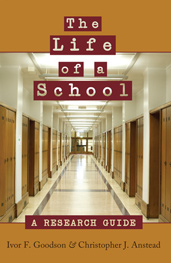The Life of a School
Studying the Life of a School
Chapter 9 turns to a more vernacular reconstruction of the history of the school, one that emphasises the structuration of everyday experience. Discussion centres on the importance of including these sorts of reconstruction in historical studies and relating them to the understanding of oral history.
The conclusion talks about how the various representations of the history of a school are related and how it is vitally important to focus on the “everyday world” of schooling.
Methodological entry points
Single Events as a Narrative Style
The analysis of one event in the history of a school is a popular choice for historians of education (McCulloch, 2011; McCulloch & Richardson, 2000). A tale set in a limited scope of time, with a small group of actors, can be treated in an easily comprehensible text. A longer history, told through events, provides an eminently readable story. People tend to partly experience their own lives as a series of events, each with a particular place in time. As a narrative device, events tie into this human experience; events can be presented as a compact set of causes and outcomes with a beginning, middle, and end. As stories, they are complete in themselves, though they may have much longer-term causes or implications.
This sort of approach can highlight an event in a way that brings a much longer scope of history into foreshortened view, with the event being used as a springboard for extended discussion. Choosing events is the key decision to make in this type of approach. The choice may be driven by your theory: Definitions can give certain events theoretical purchase, or the choice may arise from reading the data—with the sources seeming to indicate that an event was important. In general, a combination of historical and ethnographic work tends to focus closely on reading the data (Comaroff & Comaroff, 1992).
The benefits of this kind of approach derive chiefly from the ability to focus your work. A specific incident provides a tremendous focal point for any general theoretical explanation. It is possible to go into a single action in exhaustive detail. To probe your interpretation, you can turn the incident on its head, analyse it in every way possible, and consult as many alternate readings as are available before placing yourself as an arbiter of the various claims on the past. You may even wish to explore the counterfactual—the “what-ifs.”
